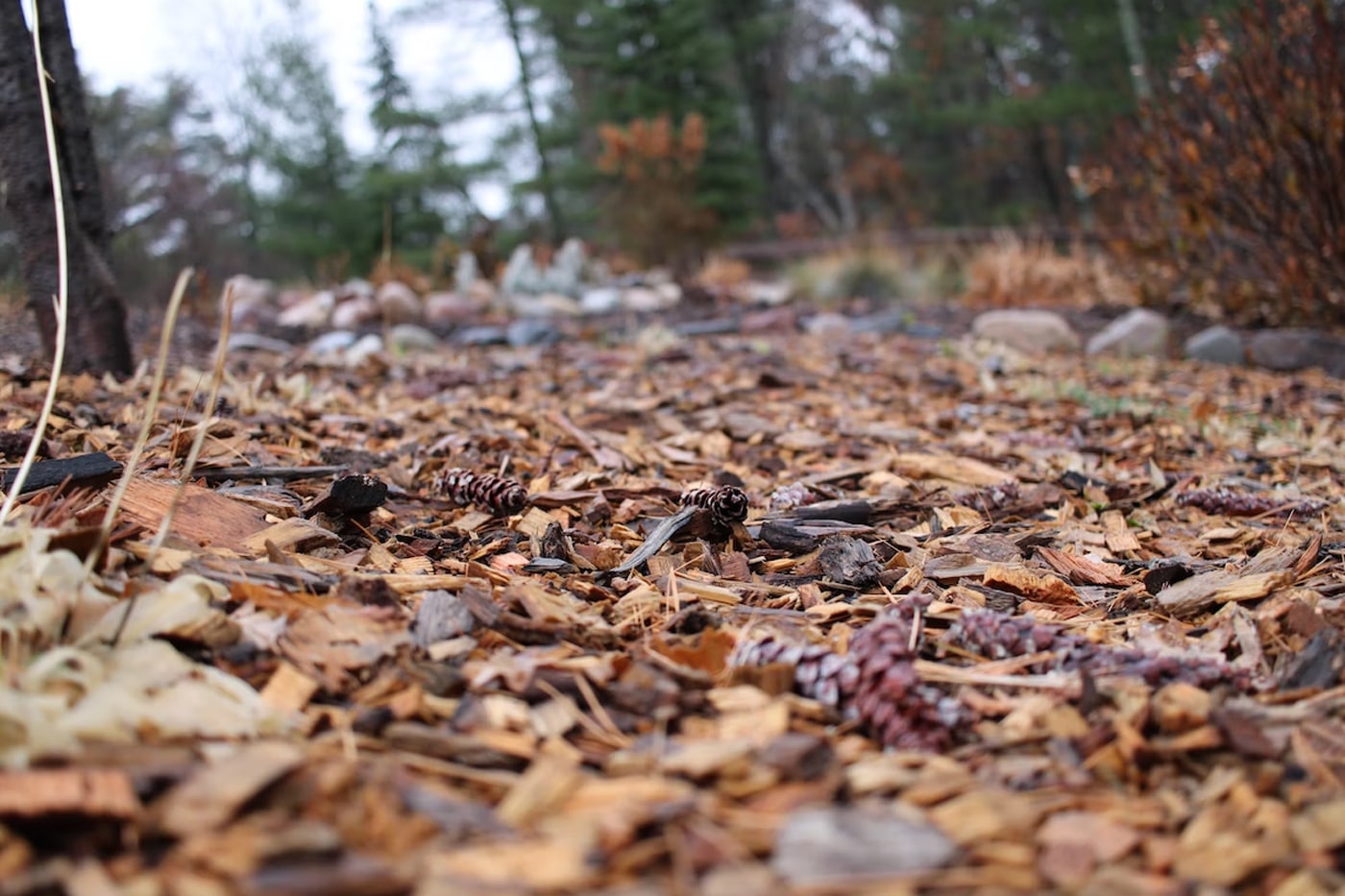It is essential to apply the right amount of mulching materials because too little of it won’t protect the soil and plants from the elements. Too much mulching could choke plants and inhibit garden critters from bringing nutrients back into the soil.
How to calculate the amount of mulch you need for your garden? That’s what this guide is for! We’ve outlined the formulas, so you’ll know exactly how much mulch you need to buy for your garden size.
Contents []
What is Mulching?

Mulching consists of organic and non-organic materials layered over the soil to protect plant roots, insulate the soil, conserve moisture, and improve the garden’s look. It also helps make garden beds more productive over time.
You can apply mulch all over the garden, particularly around the flowering shrubs, trees, beds of annuals or perennials, and vegetable patches. Mulching every spring is essential for maintaining plant health. It helps keep weeds at bay, insulate the soil, prevent erosion, and improve the garden’s look.
How to Calculate the Amount of Mulch a Garden Needs

Knowing the right amount of mulch your garden needs can be tricky, but it will help you save more without dealing with excess mulch:
Step 1: Decide what kind of mulch to use
Different materials can be used for mulching. You’ll need to decide if you’re using organic or non-organic materials.
Organic mulching materials
- Grain straw
- Fresh or old hay
- Fresh-cut forage
- Cover crops
- Chipped brush
- Wood shavings
- Cotton gin waste
- Rice or buckwheat hulls
- Other crop residues
Non-organic mulching materials
- Crushed gravel
- Granite and crushed granite
- River rock
- small stones
- pebbles
- Crushed lava rock
- Decorative or colored stones
- Crushed brick
- Crushed, graded, and tumbled glass
- Landscape fabric
We suggest using what’s most available locally, so it’s much easier to buy if your mulching needs a refresh.
Step 2: Measure the garden
Once you’ve decided what mulching materials to use, it’s time to estimate how much of these the garden needs. To do this, you have to measure the square footage of the garden.
Calculating the size of a square or rectangular garden:
Multiply the length by the width in feet.
Formula: length X width = square footage
Calculating the size of a circular garden:
Measure the radius (R) by calculating the distance from the center of the circular garden to the outer edge. Then, multiply that number by itself. Multiply the product by 3.14 (π)
Formula: R x R x 3.14 = square footage of a circular area
For an odd-shaped garden (oval or bean-shaped), use the standard shape closest to it to calculate the square footage. For a garden with multiple areas, each site should be calculated separately. Then, add the total together to get the total square footage of the entire garden.
Step 3: Calculate the depth of the mulch layer
Once you’ve calculated the total square footage of the mulching space, you need to know how deep you’d like the mulching layer to be. Generally, 3 to 4 inches of mulch is perfect for most plants except for vegetables and flowers, which should be 1 to 3 inches.
When it comes to buying mulch, you can buy it in bulk or bagged mulch. Bagged mulch is measured in cubic feet, while bulk mulch is measured in cubic yards. Which product is most cost-effective? Calculate each one using this formula:
Bulk mulch: Multiply the square footage of the garden bed by the depth of the mulch you want to use to top it. Then, divide the product by 324. For example: A 50 x 10 feet garden bed has a square footage of 500 feet. If you want to top the bed with 2-inch deep mulch, use this formula:
Formula: 50 x 10 x 2 = 1000. Then 1000 divided by 324 = 3.08 cubic yards. This means you will need 3 cubic yards of mulch.
Bagged mulch: Base the calculation on how deep you want the mulch to be, then multiply by square footage. Using the same example in the bulk mulch, a 50 x 10 feet garden bed will require the following mulch in cubic feet:
1-inch deep = .083
2-inches deep = .167
3-inches deep = .25
4-inches deep = .33
5-inches deep = .417
Formula: 50 x 10 = 500. Then 500 x .167 = 83.5 cubic feet of mulch. If you want a 2-inch deep mulch for a 50 x 10 feet garden bed, you need about 83.5 cubic feet of bagged mulch. If one bagged mulch contains about 2 cubic feet of product, you’ll need to get 42 bags to cover the entire bed with 2-inch thick mulch (83.5 divided by 2).
You can also use a mulch calculator so you don’t have to calculate manually. There are many online calculators online.
ECOgardener Landscape Fabric and Mulching
There’s no need to buy commercial mulch if you have organic materials readily available such as grass clippings or wood shavings. This will help save more on mulching. What’s important is to use the right amount to maximize the benefits of mulching.
In addition, most professionals use landscape fabric for their garden to block weeds. They cover the fabric with mulch, spread it evenly around plants and shrubs to give organic nutrients to the soil. While landscape fabric and mulch can be used together, it is important that you only buy fabric from a trusted supplier. Use ECOgardener landscape fabric that is specifically designed to avoid weeds from invading your garden.




